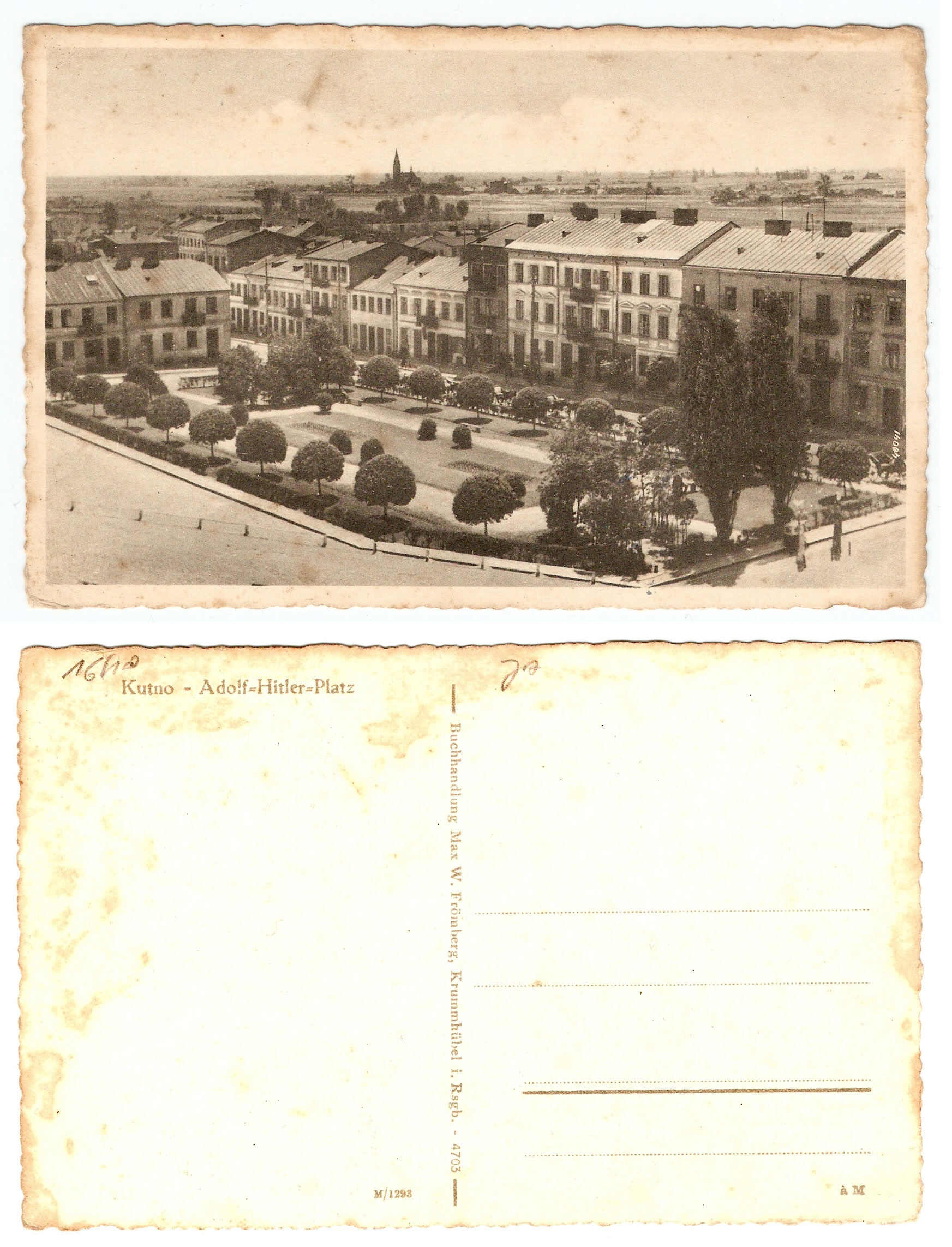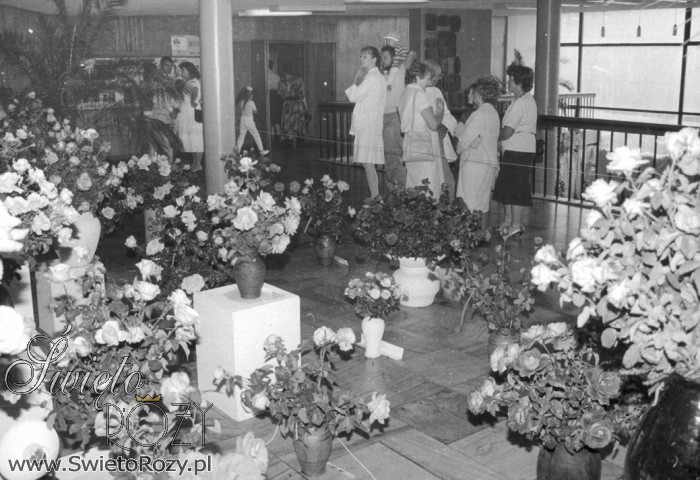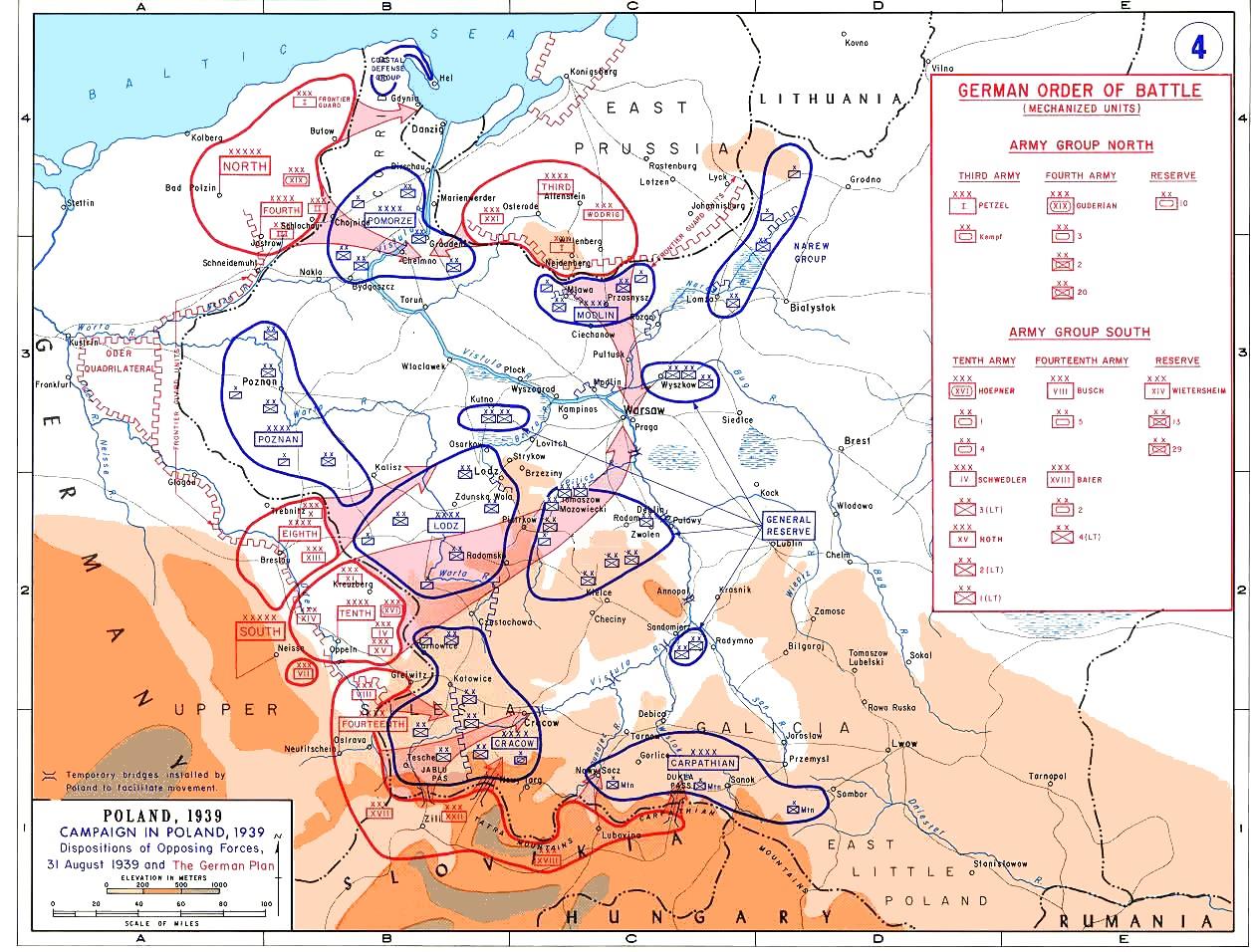|
Kutno
Kutno is a city in central Poland with 42,704 inhabitants (2021) and an area of . It is the capital of Kutno County in the ŇĀ√≥dŇļ Voivodeship. Founded in the medieval period, Kutno was a local center of crafts and trade, owing its growth to its location on the Royal Route connecting Warsaw with PoznaŇĄ and Dresden in the 18th century, and the railway from Warsaw to ToruŇĄ and Bydgoszcz since the 19th century. During the invasion of Poland in 1939, Polish armies under General Tadeusz Kutrzeba conducted an offensive in and around Kutno, that was later named the Battle of the Bzura. Based on its central location and the intersection of multiple rail lines, Kutno is an important railroad junction in Poland. Two main lines cross there (ŇĀ√≥dŇļ ‚Äď ToruŇĄ and Warsaw ‚Äď PoznaŇĄ ‚Äď Berlin). Another connection also starts in Kutno, which connects the town to PŇāock. Kutno is the location of the European Little League Baseball Center and hosts the annual Kutno Rose Festival. Geograph ... [...More Info...] [...Related Items...] OR: [Wikipedia] [Google] [Baidu] |
Kutno Rose Festival
The Rose Festival is an annual exhibition of roses and florist arrangements which takes place in Kutno, Poland. The event takes place according to tradition on the first (sometimes second) weekend of September. The first exhibition took place in 1974. The exhibition is accompanied by gardening and firms bazaars, fairs on area of the city and concerts. In 2009 the automobile Rally of the Rose had its premiere. Roses and other flowers come from breeders of ŇĀ√≥dŇļ province while floristic arrangements are prepared by florists from Poland and elsewhere, for instance Russia, Latvia or Lithuania. Origins of the festival The Rose Festival for the first time was organised in 1975 from 20 to 21 September by Kutno House of Culture (Kazimierz J√≥Ňļwiak had the initiative) named Kutno Rose Fair. During the event, rose exhibitions and handicrafts of Kutno artists were presented along with performances of folk instrumental music bands and solo performers. At first, the Kutno Rose Fair had ... [...More Info...] [...Related Items...] OR: [Wikipedia] [Google] [Baidu] |
Kutno County
__NOTOC__ Kutno County () is a unit of territorial administration and local government (powiat) in ŇĀ√≥dŇļ Voivodeship, central Poland. It came into being on 1 January 1999 as a result of the Polish local government reforms passed in 1998. Its administrative seat and largest town is Kutno, which lies north of the regional capital ŇĀ√≥dŇļ. The county also contains the towns of ŇĽychlin, lying east of Kutno, and KroŇõniewice, west of Kutno. The county covers an area of . As of 2006, its total population was 104,124, out of which the population of Kutno was 47,557, that of ŇĽychlin is 8,880, that of KroŇõniewice was 4,647, and the rural population was 43,040. Neighbouring counties Kutno County is bordered by WŇāocŇāawek County and Gostynin County to the north, ŇĀowicz County to the east, ŇĀńôczyca County to the south, and KoŇāo County to the west. Administrative division The county is subdivided into 11 gminas (one urban, two urban-rural and eight rural). These are listed in th ... [...More Info...] [...Related Items...] OR: [Wikipedia] [Google] [Baidu] |
ŇĀ√≥dŇļ Voivodeship
ŇĀ√≥dŇļ Voivodeship ( ) is a Voivodeships of Poland, voivodeship (province) of Poland. The province is named after its capital and largest city, ŇĀ√≥dŇļ, pronounced . ŇĀ√≥dŇļ Voivodeship is bordered by six other voivodeships: Masovian Voivodeship, Masovian to the north and east, Ňöwińôtokrzyskie Voivodeship, Ňöwińôtokrzyskie to the south-east, Silesian Voivodeship, Silesian to the south, Opole Voivodeship, Opole to the south-west, Greater Poland Voivodeship, Greater Poland to the west, and Kuyavian-Pomeranian Voivodeship, Kuyavian-Pomeranian for a short stretch to the north. Its territory belongs to three historical provinces of Poland ‚Äď Masovia (in the east), Greater Poland (in the west) and Lesser Poland (in the southeast, around Opoczno). Cities and towns The voivodeship contains 11 cities and 35 towns. These are listed below in descending order of population (according to official figures for 31 December 2021): Administrative division ŇĀ√≥dŇļ Voivodeship is divided ... [...More Info...] [...Related Items...] OR: [Wikipedia] [Google] [Baidu] |
Battle Of The Bzura
The Battle of the Bzura (or the Battle of Kutno) was both the largest battle and Polish counter-attack of the German invasion of Poland and was fought from 9 to 19 September.''The Second World War: An Illustrated History '', Putnam, 1975, Google Print snippet (p.38)/ref>Sources vary regarding the end date, with some giving 18 September and others 19 September. Brockhaus encyclopedia, Brockhaus Multimedial Lexikon gives 19 September 1939 as to the battle's end date. The battle took place west of Warsaw, near the Bzura River. It began as a Polish counter-offensive, which gained initial success, but the Germans outflanked the Polish forces with a concentrated counter-attack. That weakened Polish forces, and the PoznaŇĄ and Pomorze Armies were destroyed. Western Poland was now under German occupation.Zaloga, S.J., ''Poland 1939'', Oxford, Osprey Publishing Ltd., 2002, The battle has been described as "the bloodiest and most bitter battle of the entire Polish campaign". Winston Ch ... [...More Info...] [...Related Items...] OR: [Wikipedia] [Google] [Baidu] |
Powiat
A ''powiat'' (; ) is the second-level unit of local government and administration in Poland, equivalent to a county, district or prefecture (Local administrative unit, LAU-1 [formerly Nomenclature of Territorial Units for Statistics, NUTS-4]) in other countries. The term "''powiat''" is most often translated into English as "county" or "district" (sometimes "poviat"). In historical contexts, this may be confusing because the Polish term ''hrabstwo'' (an administrative unit administered/owned by a ''hrabia'' (count) is also literally translated as "county". A ''powiat'' is part of a larger unit, the Voivodeships of Poland, voivodeship (Polish language, Polish ''województwo'') or province. A ''powiat'' is usually subdivided into ''gminas'' (in English, often referred to as "Commune (administrative division), communes" or "municipality, municipalities"). Major towns and cities, however, function as separate counties in their own right, without subdivision into ''gmina''s. They ... [...More Info...] [...Related Items...] OR: [Wikipedia] [Google] [Baidu] |
Vehicle Registration Plates Of Poland
Vehicle registration plates of Poland indicate the region of Vehicle registration, registration of the vehicle given the number plate. Law According to Polish law, the registration plate is tied to the vehicle, not the owner. There is no possibility for the owner to keep the licence number for use on a different car, even if it's a cherished registration. The licence plates are issued by the powiat (county) of the vehicle owner's registered address of residence, in the case of a natural person. If it is owned by a legal person, the place of registration is determined by the person's address. Vehicles leased under operating leases and many de facto finance leases will be registered at the address of the lessor. When a vehicle changes hands, the new owner must apply for new vehicle registration document bearing their name and registered address. The new owner may obtain a new licence plate although it is not necessary. In such a situation the licence plates are usually carried o ... [...More Info...] [...Related Items...] OR: [Wikipedia] [Google] [Baidu] |
ŇĀ√≥dŇļ
ŇĀ√≥dŇļ is a city in central Poland and a former industrial centre. It is the capital of ŇĀ√≥dŇļ Voivodeship, and is located south-west of Warsaw. ŇĀ√≥dŇļ has a population of 655,279, making it the country's List of cities and towns in Poland, fourth largest city. ŇĀ√≥dŇļ first appears in records in the 14th century. It was granted city rights, town rights in 1423 by the Polish King WŇāadysŇāaw II JagieŇāŇāo and it remained a private town of the Kuyavian bishops and clergy until the late 18th century. In the Second Partition of Poland in 1793, ŇĀ√≥dŇļ was annexed to Kingdom of Prussia, Prussia before becoming part of the Napoleonic Duchy of Warsaw; the city joined Congress Poland, a Russian Empire, Russian client state, at the 1815 Congress of Vienna. The Second Industrial Revolution (from 1850) brought rapid growth in textile manufacturing and in population owing to the inflow of migrants, a sizable part of which were Jews and Germans. Ever since the industrialization of the ... [...More Info...] [...Related Items...] OR: [Wikipedia] [Google] [Baidu] |
Gostynin
Gostynin is a town in central Poland with 19,414 inhabitants (2004). It is the capital of Gostynin County in the Masovian Voivodship. History Gostynin has a long and rich history, which dates back to the early Middle Ages. In the 6th century, a Slavic Gord (archaeology), gord existed north of contemporary town, on a hill located on the left bank of the Skrwa Lewa river, along a merchant trail. In the 12th century, the settlement found itself near the border between the provinces of Mazovia and Kuyavia. In c. 1240, Gostynin was expanded by Duke Konrad I of Masovia, and in the 1280s, Duke Boleslaw II of Masovia, Boleslaw II and Duke Konrad II of Masovia, Konrad II fought over control of the settlement. As a result, in 1286 it was burned by Konrad II. Quickly rebuilt, in 1300 Gostynin was besieged but not captured by forces of Wenceslaus II of Bohemia. In c. 1326, the gord was besieged by WŇāadysŇāaw I the Elbow-high, who wanted to control the area of PŇāock, which was a Bohemian fi ... [...More Info...] [...Related Items...] OR: [Wikipedia] [Google] [Baidu] |
ŇĀowicz County
__NOTOC__ ŇĀowicz County () is a unit of territorial administration and local government (powiat) in ŇĀ√≥dŇļ Voivodeship, central Poland. It came into being on January 1, 1999, as a result of the Polish local government reforms passed in 1998. Its administrative seat and only town is ŇĀowicz, which lies north-east of the regional capital ŇĀ√≥dŇļ. The county covers an area of . As of 2006, its total population was 82,338, out of which the population of ŇĀowicz was 30,204 and the rural population was 52,134. Neighbouring counties ŇĀowicz County is bordered by Sochaczew County to the north-east, Skierniewice County to the south-east, Brzeziny County to the south, Zgierz County to the south-west, ŇĀńôczyca County and Kutno County to the west, and Gostynin County to the north-west. Administrative division The county is subdivided into 10 gminas (one urban and nine rural). These are listed in the following table, in descending order of population. ReferencesPolish official populatio ... [...More Info...] [...Related Items...] OR: [Wikipedia] [Google] [Baidu] |
Housing Developments
A housing estate (or sometimes housing complex, housing development, subdivision or community) is a group of homes and other buildings built together as a single development. The exact form may vary from country to country. Popular throughout the United States and the United Kingdom, they often consist of single family detached, semi-detached ("duplex") or terraced homes, with separate ownership of each dwelling unit. Building density depends on local planning norms. In major Asian cities, such as Hong Kong, Kuala Lumpur, Shanghai, Shenzhen, Singapore, Seoul, Taipei, and Tokyo, an estate may range from detached houses to high-density tower blocks with or without commercial facilities; in Europe and America, these may take the form of town housing, high-rise housing projects, or the older-style rows of terraced houses associated with the Industrial Revolution, detached or semi-detached houses with small plots of land around them forming gardens, and are frequently withou ... [...More Info...] [...Related Items...] OR: [Wikipedia] [Google] [Baidu] |
Administrative Division
Administrative divisions (also administrative units, administrative regions, subnational entities, or constituent states, as well as many similar generic terms) are geographical areas into which a particular independent sovereign state is divided. Such a unit usually has an administrative authority with the power to take administrative or policy decisions for its area. Administrative divisions are often used as polygons in geospatial analysis. Description Usually, sovereign states have several levels of administrative division. Common names for the principal (largest) administrative divisions include: Federated state, states (subnational states, rather than sovereign states), provinces, States of Germany#States, lands, oblasts and Region#Administrative regions, regions. These in turn are often subdivided into smaller administrative units known by names such as comarcas, raions or districts, which are further subdivided into municipality, municipalities, Commune (administrativ ... [...More Info...] [...Related Items...] OR: [Wikipedia] [Google] [Baidu] |
ŇĀńôczyca
ŇĀńôczyca (; in full the Royal Town of ŇĀńôczyca, ; ; ) is a town of inhabitants in central Poland. Situated in the ŇĀ√≥dŇļ Voivodeship, it is the county seat of the ŇĀńôczyca County. ŇĀńôczyca is a capital of the historical ŇĀńôczyca Land. Origin of the name The town was probably named after a West Slavs, West Slavic (Lechites, Lechitic) tribe called Leczanie, which inhabited central Poland in the early Middle Ages. Some scholars however claim that the town was named after an Old Polish word Ňāńôg, which means a swampy plain. In medieval Latin documents, ŇĀńôczyca is called Lonsin, Lucic, Lunciz, Lantsiza, Loncizia, Lonsitia and Lunchicia. In the early 12th century, Gallus Anonymus called ŇĀńôczyca "Lucic", and in 1154, Arab geographer Muhammad al-Idrisi named it Nugrada, placing it among other main towns of the Kingdom of Poland (1025‚Äď1385), Kingdom of Poland, such as Krak√≥w, Sieradz, Gniezno, WrocŇāaw and Santok. Location ŇĀńôczyca lies in the middle of the county, an ... [...More Info...] [...Related Items...] OR: [Wikipedia] [Google] [Baidu] |





